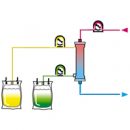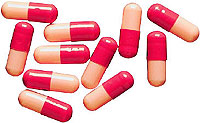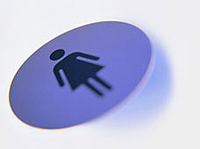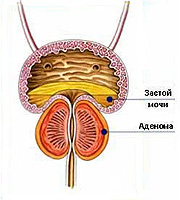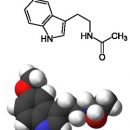Treatment of chronic renal failure is comprehensive and is carried out in order to correct violations of exchange processes and removal of waste products. The main methods of treating disease are drug therapy, diet, hemodialysis and kidney transplantation.
Content
Medicase therapy of chronic renal failure
Drug therapy is prescribed, first of all, in order to correct disorders that occur during chronic renal failure.
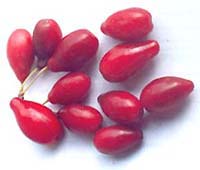 Already at an early stage, a decrease in calcium content in the body is revealed, which can lead to convulsions, as well as changes in the bones - up to fractures. Therefore, patients in outpatient conditions are advised to take calcium preparations: calcium gluconate (1 tablet 3 times a day), 10% calcium chloride solution (1 st. L. 4-5 times a day).
Already at an early stage, a decrease in calcium content in the body is revealed, which can lead to convulsions, as well as changes in the bones - up to fractures. Therefore, patients in outpatient conditions are advised to take calcium preparations: calcium gluconate (1 tablet 3 times a day), 10% calcium chloride solution (1 st. L. 4-5 times a day).
The content of potassium, magnesium and phosphorus in the body, on the contrary, more often rises. Therefore, it is impossible to take potassium, magnesium preparations (Panangin, Asparkamka, Potassium chloride); It is necessary to eliminate the products rich in these substances.
With anemia, patients take iron preparations folic acid (1 tablet 3 times a day). Patients with chronic renal failure are recommended cleansing belizes, especially soda. Effectively use of so-called sorbents (for example, activated carbon), which adsorb toxic substances in the intestines.
The hypotensive therapy has continued, the treatment of edema. In recent years, the so-called active methods have been widely used in chronic renal failure. This is, above all, hemodialysis, hemosorption, peritoneal dialysis, kidney transplantation.
Hemodialysis
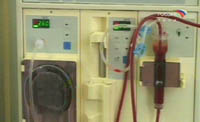 Hemodialysis - «Artificial kidney» - For the first time, it was proposed for the treatment of patients with chronic renal failure in 1943. The principle of operation of all devices «Artificial kidney» The same: through a special semi-permeable membrane, the blood contact and dialing liquidbone having a certain chemical composition. As a result, there is an exchange of electrolytes, nitrogenous substances and other slags accumulating in the blood of the patient, and thus the blood is cleaned by the blood and dialysis fluid. Hemodialysis sessions are conducted with different frequencies: every other day, daily, 2-3 times a week. The duration of hemodialysis is 6-8 hours. This method of treatment significantly improves the patient's condition and affects the life expectancy. Today on hemodialysis there are from 100 to 200 people per 1 million, population. Unfortunately, with the current state of our health care, it is not possible to provide hemodialysis to all patients who need it.
Hemodialysis - «Artificial kidney» - For the first time, it was proposed for the treatment of patients with chronic renal failure in 1943. The principle of operation of all devices «Artificial kidney» The same: through a special semi-permeable membrane, the blood contact and dialing liquidbone having a certain chemical composition. As a result, there is an exchange of electrolytes, nitrogenous substances and other slags accumulating in the blood of the patient, and thus the blood is cleaned by the blood and dialysis fluid. Hemodialysis sessions are conducted with different frequencies: every other day, daily, 2-3 times a week. The duration of hemodialysis is 6-8 hours. This method of treatment significantly improves the patient's condition and affects the life expectancy. Today on hemodialysis there are from 100 to 200 people per 1 million, population. Unfortunately, with the current state of our health care, it is not possible to provide hemodialysis to all patients who need it.
Recently, hemodialysis is complemented by the use of hemosorption and gemofiltration methods - blood purification using sorbents. Along with hemodialysis, peritoneal dialysis is becoming increasingly distributed, in which the dialying fluid is introduced in small portions at a certain time in the abdominal cavity, where the exchange of exchange products is saturated and then replaced by fresh solution.
Diet nutrition
In chronic renal failure, high-calorie power is shown, and calorie content is ensured by fats and carbohydrates, with limited proteins up to 20-40 g. Dishes should be prepared from products containing easily durable full-fledged proteins with all indispensable amino acids.
To normalize water and electrolyte exchange, it is recommended to use vegetables and fruits. The amount of salt and water is determined, taking into account the presence of edema and excretory renal function. In the initial stage of the disease (with abundant liquid release), the salt is not limited at all - 10-15 g per day is allowed, with high arterial pressure and swelling, the salt is limited to 5-7 g. The amount of fluid in the initial stage is also not limited, in the future it is calculated by the formula: 500 ml plus the amount of selected urine for the previous day.
In the initial stage of the disease, diet No. 7 is allowed; With moderately pronounced signs of chronic insufficiency in the remission stage, diet No. 76 is recommended; under the pronounced deficiency of the kidneys - diet number 7A, which has advantageItalianly vegetative orientation, with a sharp limitation of protein, the full exception of the cook salt and a moderate decrease in fats and carbohydrates.
In diet number 7a, the same products and dishes are allowed and excluded, as in diet No. 76, however, almost 2 times the amount of meat, fish, eggs, milk and dairy products are reduced.

